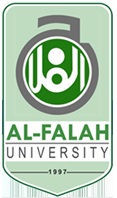- Home
- About Us
- Products
- RFID READERS
- UHF 900MHz RFID Reader ISO 18000-6C,EPC Gen2 Smart Card Reader For Library Management Drug Tracking
- Single Channel 13.56MHz Fixed RFID Reader RS232,RS485,Ethernet,USB,CAN Communication Interface
- RFID Fixed Reader 860 960Mhz RS232 RS485 Long Range UHF RFID Reader
- Mid Range Fixed RFID Reader with Adjustable RF Power Four Channels
- ISO15693 HF RFID Long Range Reader Reading Range 118cm For Single Antenna
- 13.56MHz Fixed RFID Reader With 4 Channels Reading Range 75cm
- Four-Port RFID Reader (BB6501)
- High Frequency Industrial RFID Reader , Single Channel Fixed RFID Reader With One Relay
- HF RFID Sticker Reader 12 Ports Has Speed Of Reading The Tag Up To 70pcs , Sec Long Range RFID
- 13.56MHz Six Channels Fixed RFID Reader Support Multiple Antenna Ports 70pcs tags Per Second
- EMI Detection HF Stationary RFID Reader , High Sensitivity RFID Tags Network Reader
- Aluminum Alloy Housing Fixed RFID Reader With 12 Channels Anti Collision Algorithm
- 30 Channels HF RFID Fixed Reader , High Power RFID Reader For Bookshlef Inventory Management
- UHF High Performance Integrated Reader (R2000 Module)-9Dbi
- UHF Long Range Integrated Reader?R2000 Module)-12Dbi
- UHF High Performance Integrated Reader (R2000 Module)-9Dbi C
- 2.4ghz Active Rfid Handheld Reader
- UHF Middle Range Integrated Reader(R2000 Module)-8 Dbi
- UHF Middle Range Integrated Reader (R2000 Module)-6Dbi-
- UHF Long Range Integrated Reader-12Dbi
- UHF High Performance Integrated Reader-9Dbi C
- UHF Middle Range Integrated Reader -8Dbi
- UHF High Performance Integrated Reader-9Dbi
- UHF Middle Range Integrated Reader- 6 Dbi
- 9Dbi Integrated Reader
- 2.4G RFID RTLS Activator Alarm Buzzer Locator for 2.4G Active Reader
- RFID PASSIVE TAGS
- INDUSTRIAL RFID READER
- HF Micro-power Modbus RS485 Communication Integrated reader Support ISO 15693 Standard
- UHF Industrial Reader Antenna 860-960MHz Reader Antenna IP67 In Automatic Production Line
- RFID Tag Reader Freight Forklift Scanner With Battery Industrual Ethernet RS485 WIFI Communication And SMA Interface
- Medium Power HF RFID Reader Modbus TCP/RS485/RS232 Communication With M12 and SMA Antenna Interface for production Data Acquisit
- ISO15693 and ISO14443A/B Standard Micro-power rfid reader Modbus RS485 Communication
- ISO 15693 Protocol M12A Interface RFID Industrial Reader Split Designed IP67
- Industrial Protocol Converter Gateway
- High Performance IP67 Industrial RFID Reader / Writer Modbus Communication Use for Data Logged with WIFI Module
- High Frequency RFID Proximity Reader for Asset Management Modbus TCP Communication IP67
- HF Modbus RS485 Compact RFID device M12 Interface used for distributed production line
- HF Micro-power Modbus TCP Communication Integrated rfid reader IP67
- 13.56MHz Industrial RFID Reader M12 Interface Modbus TCP Communication Mode For Data Acquisition
- HF Micro-power Modbus RS485 Communication Integrated Industrial RFID Reader IP67
- HF Micro-power Modbus RS485 Communication Industrial RFID Reader/writer for warehouse management
- Convenient HF Industrial Reader Antenna 13.56MHz / SMA Antenna Has Strong Ability To EMC
- Compact Structure RFID Antenna 13.56MHz Industrial Reader Antenna Has Strong Ability to EMC
- Automatic Sorting RFID Reader Antenna SMA Antenna Interface Brass Nickel Plating Housing Material
- 13.56mhz Wall Mounted RF Card Reader / Writer Split Designed Made of PC and ABS
- 13.56MHz Modbus TCP Communication Fixed Reader for warehouse management
- 13.56MHz Micro-power Modbus RTU 485 Communication rfid embedded reader for Factory Automation
- 13.56MHz Micro-power Modbus RS485 Communication Fixed Reader decentralized identification of product
- DESKTOP RFID READER
- UHF Desktop USB Reader & Writer-1Dbi
- UHF Desktop USB Reader & Writer-2 Dbi
- UHF Desktop USB Reader & Writer (RS232/Wiegand)-2 Dbi
- UHF Desktop USB Reader & Writer (RJ45)-3Dbi
- Desktop RFID Card Reader UHF RFID Library Management System Librarian Staff Workstation Pad Reader
- Long Range Dual Frequency 13.56MHz And 860-960MHz Reader RFID Reader RFID Desktop Card Reader
- RFID Scanner Desktop RFID ID Card Reader , Close range HF RFID Card Writer With reader card module
- Mid Range HF Desktop RFID Card Reader USB RFID Scanner Support Host And Scan Work
- Read ICODE ILT Casino Token Desktop RFID Card Reader ISO18000 - 3M3 RFID Reader Writer
- Large Size 13.56MHz White Desktop RFID Card Reader USB RF Power 0.25-1.5W
- 0.68W HF RFID Access Control Reader , Wall Mount Desktop RFID Reader For Time Attendance
- NXP ICODE SLIX Chip 13.56MHz Desktop RFID Card Reader Writer USB Interface Plug / Play
- Desktop Small RFID Card Reader ISO14443A 13.56Mhz Proximity RFID Reader With Plastic Case
- RFID ACTIVE TAGS
- RFID GATE READER
- 3D HF RFID Library Gate Reader For RFID Open Access Control System Protocol Light,Buzzer Alarm
- Anti -Theft RFID Library Gate Reader Antenna Aisle Width 120CM ISO18000 - 6C Protocol
- RJ45 RS232 Interface Support Windows System development UHF RFID Reader Anti -Theft RFID Gate for Library
- Security Anti-Theft RFID Library 860MHZ 960MHZ UHF Library RFID Gates For Personnel Asset Tracking
- Anti -Theft UHF RFID Smart Library Gate Reader Aisle Width 120CM ISO18000 - 6C Protocol
- EAS, AFI Alarm RFID Gate Reader for Library Entrance System Aisle Width 90CM
- Enterprise Access Control RFID Attendance Channel , 13.56 MHz RFID Reader Gate RF Power 3 - 8W
- Multi - Item Detection RFID Gate Reader for RFID Library Management System
- Integrated Library RFID Gate System 13.56MHz With Multiple Aisles, RFID Door Reader
- Indoor RFID Reader Long Distance , Library Security Gates Support Tag UID Detection
- ID Identifying Long Range Passive RFID Reader , 25W Power RFID Gate Access Control System
- High Frequency RFID Gate Antenna Embedded With 13.56MHz RFID Reader For Staff Attendance System
- SMART LIBRARY READER SOLUTIONS
- 140CM RFID Library Gate Reader Antenna Entrance Exit Anti -Theft
- UHF RFID Library Management System Librarian Staff Workstation Pad Reader
- ISO18000-6C/EPC Gen2 RFID Library Reader Writer UHF 860-960Mhz Mid Range Staff Workstation For Library
- 13.56MHz RFID Smart Library Bookshelf Antenna For Multi Tags Real Time Tracking
- HF Shielded Pad Antenna for RFID Library Sorting equipment
- ISO15693 HF Long Range Reader 13.56Mhz With 6 Ports SMA For Intelligent Bookshelf RFID Library
- High Frequency Long Range Multiport RFID Reader Writer For Smart Library Unmanned Convenience Store
- RFID Library HF Reader Writer ISO 15693 With RS232 / RS485 / USB / Ethernet Interface for Smart Bookshelf
- RFID Library Book Borrow And Return Self Service Kiosk With Self - Help Certificate Handling Machine
- RFID Tag Reader Library Books Tagging Conversion Station , RFID Based Book Tracking System For Library
- Self Service Kiosk Embedded UHF RFID Library Reader Writer, 1-27DBM Integrated RFID Reader
- Tablet Book Inventory Library RFID Reader with USB Communication Interface Used for tags machining
- Handheld Library RFID Reader Antenna 13.56 MHz For Library Book Tracking System
- Bluetooth UHF Handheld RFID Library Readers Linked With Tablet PC Host And Scan Work Mode
- RFID SYSTEMS
- DISPLAY SECURITY ALARM SYSTEMS
- Camera Display Security Stand
- Universal Adjustable Foldable Tablet Stand Aluminium Metal Phone Holder
- Laptop Security Stand
- Laptop Security Locks
- Smart WIFI GSM Alarm System
- Smart Home Security Alarm System
- Anti Theft Mobile Stand
- Wall Mount Tablet Stand
- UHF Long Range Small Size Security RFID Jewelry Labels Sticker Price Tags For Jewellery
- Security Display Hook
- Mobile Accessories Security Display Hook
- Display Security Stand for DSLR Camera
- Camera Security Alarm System 02
- Lens Display Security Alarm System
- Camera Security Alarm Stand
- Mobile Alarm Security Stand
- Smart Watch Security Alarm Stand
- Smart Watch Security Alarm Stand
- Smart Watch Security Alarm Stand
- Alarm Watch Display Security Stand
- Smart Watch Display Security Stand
- Remote Control Security Display Stand
- Mobile Security Alarm Security Stand
- Device Charging Mobile Stand
- Mobile Tablet Security Stand
- Multiport Mobile Display Security Alarm System
- Mobile Phone Security Alarm Stand HW-10
- Retractable Mobile Stand
- Mobile Display Security Alarm System - Multi
- Multiport Mobile Display Security Alarm System
- EAS SYSTEMS
- BEACONS
- SOFTWARE
- RFID READERS
- Gallery
- Investors
- Contact Us




.webp )









